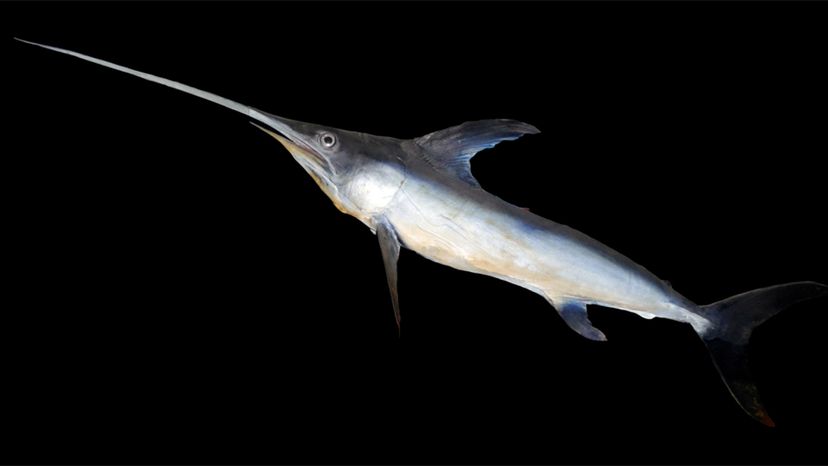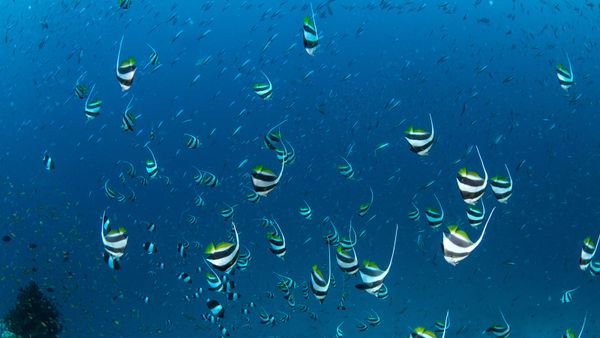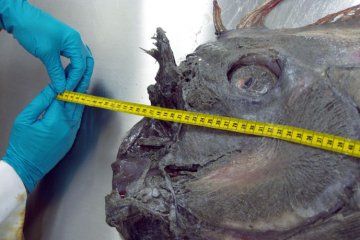"Swordfish use their sword extensively in the pursuit and acquisition of prey," says Sepulveda. "While feeding, swordfish commonly slash at their prey first, immobilizing or stunning the prey item before swallowing it whole."
Swordfish are aggressive, powerful, fast, strong — everything a top predator needs to be. But they've also got some special traits that make them especially effective at hunting in the open ocean. For one thing, their eyesight is exceptionally good — they can see well enough to forage both at night and in the very low light conditions of deep ocean waters during the day. This allows them to follow prey anywhere it goes — horizontally or vertically in the water column.
Swordfish also have regional endothermy, an adaptation in pelagic fishes that allows them to elevate and maintain the temperature of certain parts of their body several degrees above the ambient water temperature. This means they can keep the temperature higher in the parts of their body that need to remain very active, even in very cold waters — their eyes, brains and the muscles responsible for sustained swimming, for instance. By doing this, swordfish remain ferocious fighting machines, even at low temperatures that might begin to hamper their prey, plus they can handle temperature changes of more than 27 degrees F (15 degrees C) within a matter of minutes. Other predatory fish like tuna and some shark species exhibit a much greater capacity for regional muscle endothermy than swordfish, but they can't sustain such long, fast dives down the water column.
And finally, swordfish are capable of extensive migrations — up to 3,100 miles (5,000 kilometers) one way, with a return trip the next year to the same exact location.
"Swordfish migrations can span from the equator to very high latitudes (50°N and 50°S)," says Sepulveda. "These long migrations coupled with extreme temperature tolerance enable swordfish to extend into some of the most productive habitats on earth. It is not common for pelagic fish to tolerate temperature changes in excess of 36 degrees F [20 degrees C] on a daily basis. New tag technology is helping researchers document these movements for the very first time. Our recent data are helping us realize how truly amazing these predators are."


